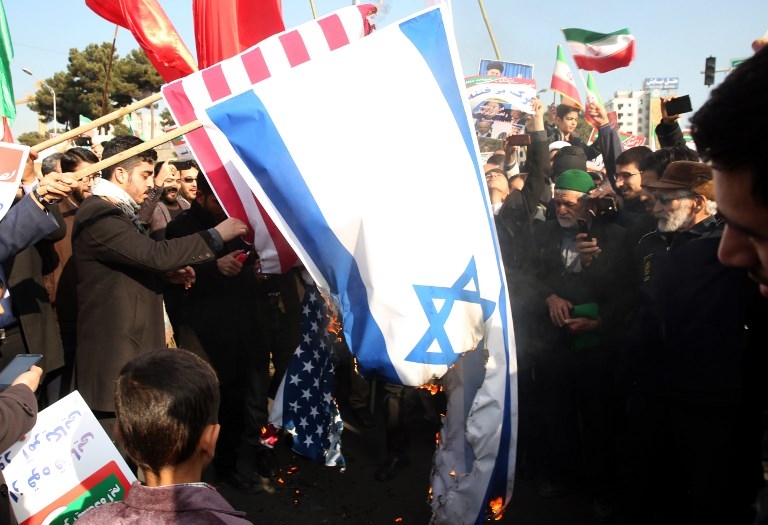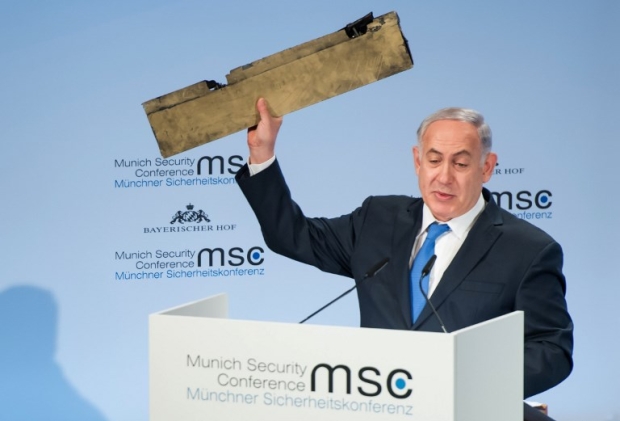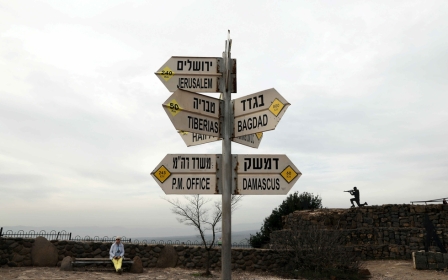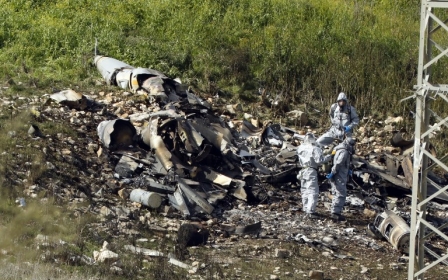Are Iran and Israel on collision course in Syria?

Israeli Prime Minister Benjamin Netanyahu and Russian President Vladimir Putin spoke over the phone on Wednesday, one among dozens of calls and a handful of face-to-face meetings over the past three years.
As both leaders vowed not to further escalate matters in Syria, the call indicated that tensions between Israel, Russia, Iran and Syria were being defused. Another indication came when the Israeli army’s chief of staff, Lieutenant-General Gadi Eisenkot, did not cancel his scheduled one-day trip to Poland; he flew on Thursday morning to participate in the March of the Living at the Auschwitz-Birkenau death camp.
For the time being, the prospect of an open confrontation between Israel and Iran over Syria appears to have been reduced - or more accurately, postponed, as the two countries remain on a collision course.
Preparing for the ‘day after’
For years, Iran and Israel have been engaged in a clandestine cold war, involving assassinations, sabotage and acts of terrorism carried out by secret agents or their proxies in the Middle East, Asia, Africa, Europe and South America. They fought over Iran's nuclear programme, Hezbollah in Lebanon, and the Palestinian issue. But in the last couple of years, the two enemies have been battling in a new arena: Syria.
As the seven-year civil war in Syria has tilted in favour of President Bashar al-Assad’s regime, which has regained territory and solidified its control over a number of areas, both Israel and Iran have been preparing for the “day after”.
Iran, which alongside Russia has emerged as Assad’s saviour, has consolidated its direct and indirect military presence in Syria, hoping to earn economic concessions and air, naval and land military bases - including some close to the border with Israel.
While in the past it appeared to turn a blind eye to Israeli air strikes, the Russian army this time provided precise operational details and accused Israel of undermining security and stability in Syria and the region
Israel, meanwhile, has declared that it could not tolerate this sort of direct frontline with Iran in addition to its front with Lebanon’s pro-Iranian Hezbollah. Until two years ago, most of Israel’s involvement - its “red lines” - in Syria comprised retaliation against Assad’s forces for any strike against its Golan Heights territory, along with hitting missile shipments from Iran to Hezbollah via Syria.
But recently, as Iran has attempted to deepen its military posture in Syria in general and close to the Israeli border in particular, Israel drew a new red line: to use its air force to strike bases, air fields and military equipment of Iranian forces in Syria. Israel is especially worried about the deployment in Syria of Iranian drones and anti-aircraft systems, which could limit the maneuverability of its own air force.
Policy of ambiguity
Although Israel maintains a policy of ambiguity - neither denying nor confirming its strikes in Syria, particularly against Iranian targets - it was reported in 2017 that Israeli planes struck at least twice, hitting an empty base that supposedly hosted Shia fighters under Iranian command and a missile factory.
Then, in February, for the first time, the two nations exchanged military punches out in the open in Syrian skies. Iran launched a drone from the T-4 airfield, near Homs, into Israel; Israeli air defences followed the drone and shot it down in Israeli territory. It remains unclear whether the drone was sent on an intelligence-gathering mission or for the purposes of an attack.
In response, Israeli planes bombed the drone’s command centre at T-4. En route back, one of Israel's US-made F-16s was shot down by Syria’s air defence. While Israel has revealed almost all the details of the incident, Iran has denied it completely as “Israeli propaganda”.
Then, before dawn on Monday, Israeli fighter planes reportedly revisited T-4 to target Iranian installations and equipment, killing seven Iranian advisers, including a colonel in charge of drone operations. This time, the roles were reversed: Israel said nothing, while Iran published the names and photos of the advisers. Senior Iranian officials, including former foreign minister Ali Akbar Velayati, promised to retaliate.
Russia also reacted angrily. While in the past it appeared to turn a blind eye to Israeli air strikes, the Russian army this time provided precise operational details and accused Israel of undermining security and stability in Syria and the region.
Moscow in the middle
The situation is still very fragile. Israeli officials assume that Iran, with its “elephant memory”, will seek revenge for the killing of its servicemen at a time and place that suits its interests, and not necessarily in Syria. At the moment, Tehran doesn’t want to complicate matters when it’s anxiously awaiting the US president’s decision next month on whether to walk away from the nuclear deal.
Nevertheless, both sides are determined to pursue their conflicting interests: Iran to further deploy its forces in Syria to safeguard its Shia land corridor via Iraq and Syria to Lebanon and the Mediterranean, and Israel to prevent Iran from deepening its foothold in Syria.
Russia, which is stuck in the middle, is trying to mediate between the two sides. Putin knows very well that Israel holds the key with its capabilities to destabilise Syria. In a way, Israel is holding Assad hostage vis-a-vis Russia’s interests in grooming him. But Putin also knows and understands Iranian interests in Syria, and his mission to accommodate both is an exceptionally complex task.
- Yossi Melman is an Israeli security and intelligence commentator and co-author of Spies Against Armageddon.
The views expressed in this article belong to the author and do not necessarily reflect the editorial policy of Middle East Eye.
Photo: Iranian pro-government supporters burn Israeli and US flags during a rally in support of the regime on 4 January 2018 (AFP)
Middle East Eye propose une couverture et une analyse indépendantes et incomparables du Moyen-Orient, de l’Afrique du Nord et d’autres régions du monde. Pour en savoir plus sur la reprise de ce contenu et les frais qui s’appliquent, veuillez remplir ce formulaire [en anglais]. Pour en savoir plus sur MEE, cliquez ici [en anglais].






